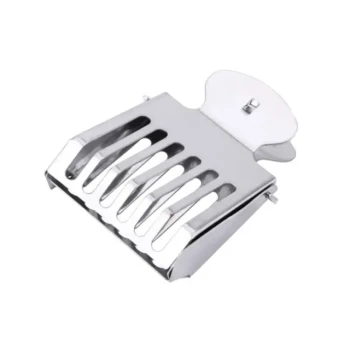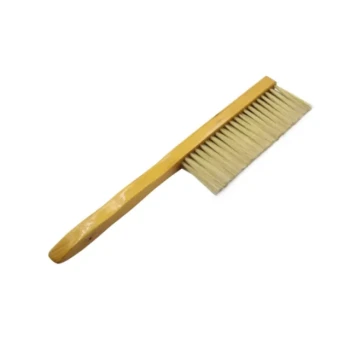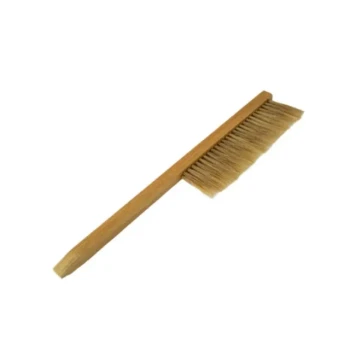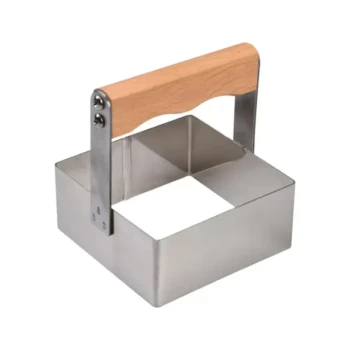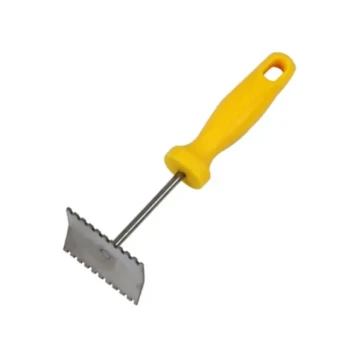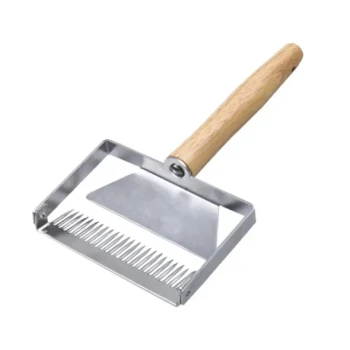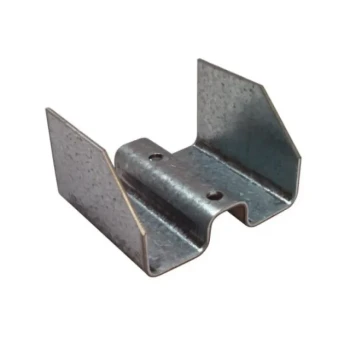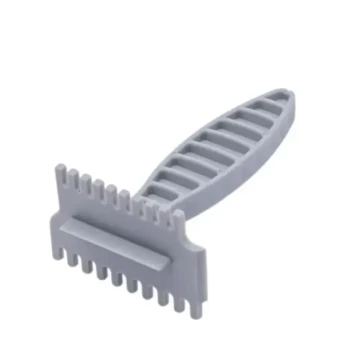For many beekeepers, a jacket offers a superior blend of convenience and protection. Compared to a full suit, a beekeeping jacket is significantly easier and faster to put on, lighter, and less cumbersome. This makes it a more practical and comfortable choice for routine hive inspections, especially in hot weather, without a major compromise on upper-body safety.
The decision between a jacket and a full suit is not about which is universally "better," but which is the right tool for your specific context. The choice hinges on balancing personal comfort, climate, and your confidence level when working with bees.
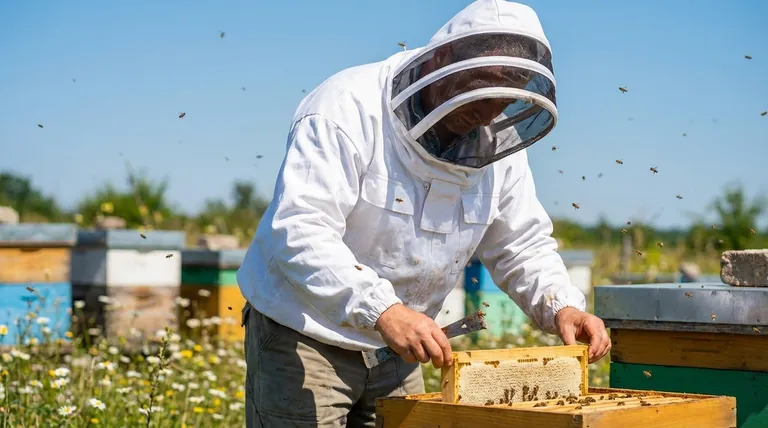
The Case for the Jacket: Prioritizing Mobility and Comfort
For day-to-day beekeeping, the advantages of a jacket often outweigh the absolute protection of a full suit. The key benefits center on speed and comfort.
Unmatched Convenience for Quick Checks
A beekeeping jacket goes on like a standard hoodie or coat. This simplicity is invaluable when you only need to perform a quick, five-minute inspection or refill a feeder.
You can get into your gear and to your hives in a fraction of the time it takes to step into a full suit and secure all its zippers and closures.
Superior Comfort in Hot Climates
The most significant advantage of a jacket is temperature regulation. By covering only the upper body, a jacket is inherently cooler and less restrictive than a full suit.
This reduction in heat stress is critical during summer hive work, preventing overheating and allowing you to remain calm and focused on the bees.
Sufficient Protection for Most Scenarios
A high-quality jacket provides excellent protection for the torso, arms, neck, and head, which are the most common targets for stings.
When paired with thick jeans or dedicated beekeeping pants, a jacket offers a level of protection that is more than adequate for calm colonies and routine inspections.
When to Choose a Full Suit: Maximizing Protection
While a jacket is often sufficient, the full beekeeping suit remains the standard for situations demanding maximum security.
The Confidence of Complete Coverage
A full suit provides a seamless barrier from your neck to your ankles. This eliminates the potential gap at the waist, a common source of anxiety for new beekeepers.
This feeling of complete security can help you relax, which in turn leads to calmer bees and a more positive beekeeping experience.
Protection from Propolis and Debris
Beekeeping can be a messy job. A full suit protects your regular clothes from being stained with wax, honey, and especially sticky propolis, which is very difficult to remove from fabric.
A Necessity for Aggressive Colonies
If you are working with a known defensive or aggressive colony, performing a hive removal, or conducting a disruptive task like a honey harvest, a full suit is not optional. It is essential professional equipment.
Understanding the Trade-offs
Neither option is perfect. Your choice requires acknowledging what you are giving up.
The Jacket's Vulnerability
The primary trade-off of a jacket is the gap at the waist. While bees are unlikely to exploit this on a calm day, a determined or agitated bee can find its way up your shirt or down your pants.
This risk, however small, must be weighed against your personal comfort and the temperament of your bees.
The Suit's Burden
The security of a full suit comes at the cost of comfort and convenience. It is hotter, heavier, and takes significantly longer to put on and take off.
This can make you reluctant to perform quick, necessary checks, potentially leading you to neglect the hives. Even fully ventilated suits, while helpful, are still bulkier and warmer than a simple jacket.
Making the Right Choice for Your Goal
Select your gear based on your most common beekeeping activities and personal comfort level.
- If your primary focus is quick, routine inspections in a hot climate: A quality beekeeping jacket offers the best balance of comfort and sufficient protection.
- If you are a new beekeeper or prioritize maximum peace of mind: A full suit eliminates potential gaps and allows you to focus on the bees, not on your gear.
- If you work with defensive colonies or perform intensive hive manipulations: A full suit is the non-negotiable professional standard for safety.
Ultimately, the best protective gear is the one that makes you feel confident and safe, allowing you to be a calm and effective beekeeper.
Summary Table:
| Feature | Beekeeping Jacket | Full Beekeeping Suit |
|---|---|---|
| Best For | Routine inspections, hot climates | New beekeepers, aggressive colonies, intensive work |
| Mobility & Comfort | High (lightweight, less restrictive) | Lower (bulkier, warmer) |
| Ease of Use | Quick to put on/take off | Slower to don/doff |
| Protection Level | Excellent for upper body (torso, arms, head) | Maximum (full body coverage) |
| Primary Trade-off | Potential gap at the waist | Reduced comfort and mobility |
Ready to choose the right protective gear for your apiary?
At HONESTBEE, we supply commercial apiaries and beekeeping equipment distributors with high-quality, durable jackets and full suits designed for professional use. Our wholesale-focused operations ensure you get the reliable equipment you need to keep your beekeeping operations safe and efficient.
Let our experts help you equip your team with confidence. Contact HONESTBEE today to discuss your specific needs and volume requirements!
Visual Guide
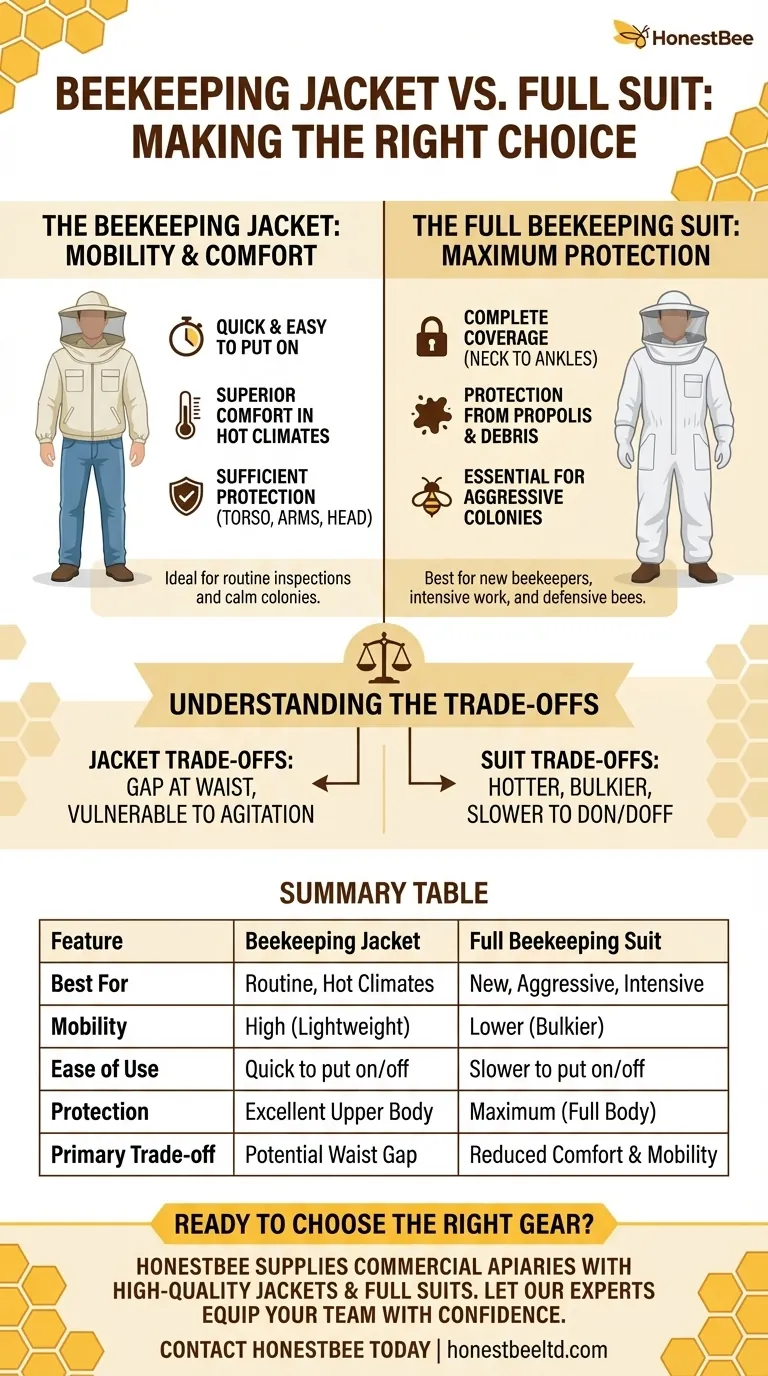
Related Products
- Beekeeping Jacket with Hood and Veil for Beekeepers
- Economy Polyester Beekeeping Jacket with Veil and Hat
- Beekeeping Gloves Goatskin Leather with Long Cotton Sleeve for Beekeepers
- Long Langstroth Style Horizontal Top Bar Hive for Wholesale
- Professional Engraved Round Hive Number Tags for Beekeeping
People Also Ask
- What are the key features of a good beekeeping jacket? Unlock Confidence and Comfort at the Hive
- What is a third option for beekeeping protective clothing? Discover the Modular Jacket & Pants Combo
- Can a bee sting through a bee suit? Understanding Sting-Resistant Protection
- What are the cons of wearing a bee jacket? Understanding the Protection Trade-Offs
- What should be considered when choosing the fabric weight of a beekeeping suit? Prioritize Safety & Comfort for Your Apiary






